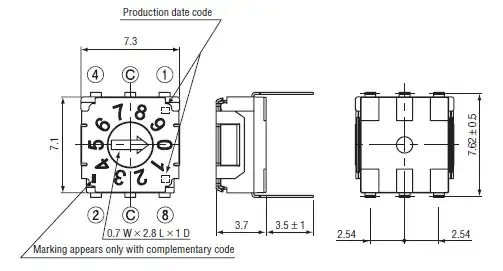Switching refers to the voltage and current that the switch can safely handle when transitioning from open to closed or closed to open without excessive arcing and damaging the contacts.
Non-switching refers to voltage and current that the switch can safely handle when the contacts remain in one position.
The minimum rating is a little more complicated. If the switch is operated with too little current, it can build up resistance (from dirt and corrosion) and eventually fail. A small amount of arcing is actually desirable to keep this accumulation from happening. This is also known as "wetting" current.
Reference: Switch contact ratings on AllAboutCircuits.com.
Edit, per comments:

I'm not sure which specific version of the rotary switch you have, as the datasheet is applicable to several variations. However most have the same pinout as above. The "C" terminals stand for common, meaning that an electrical connection is made from the common pin to any or all of the numbered pins based on the position of the selector.
For example, with a "real code" switch, if the selector is at position 3, then pins 1 and 2 will both be connected to common. The behavior of complementary code and gray code switches are different; this is outlined in the chart "Code Format" on page 2 of the datasheet.
